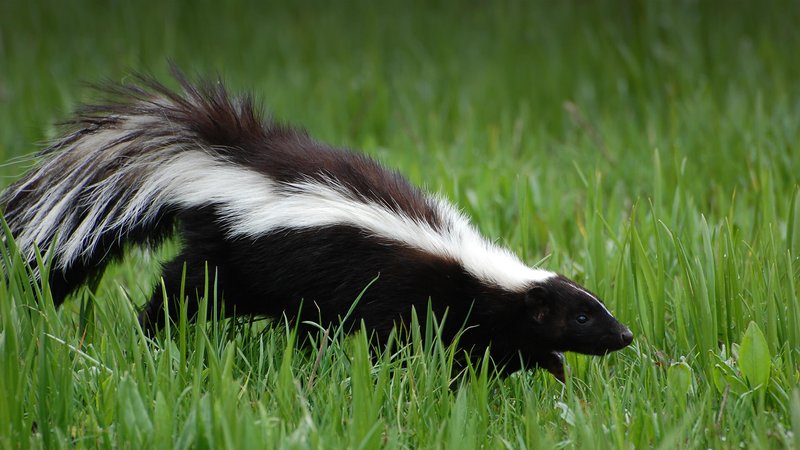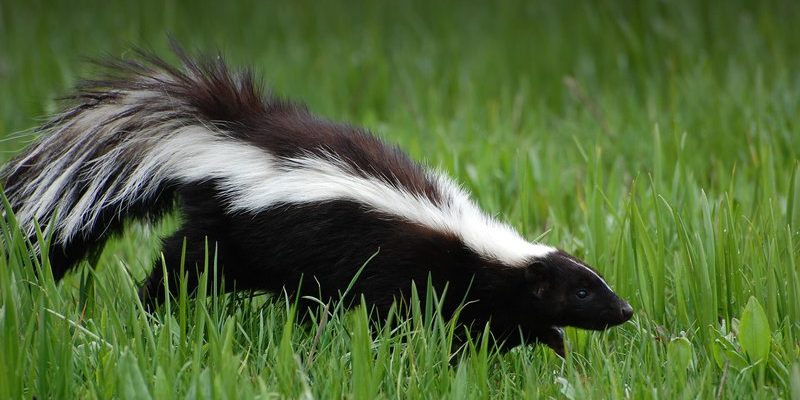
Conservation discussions often highlight the more glamorous animals like pandas or tigers, but let’s not overlook the skunk. These animals play an essential role in their ecosystem, helping control insect populations and even ensuring the balance of certain plant species. So, is the skunk facing any real threats? Let’s break it down together over a cup of coffee.
Understanding Skunk Species and Their Habitats
There are several species of skunks, with the most well-known being the striped skunk, spotted skunk, and hooded skunk. Each of these species has its own habitat preferences, which can range from forests to grasslands, and even urban areas. Skunks are quite adaptable, which is part of what makes them so interesting.
The striped skunk, for example, is often found near agricultural areas where they can feast on insects and rodents. In contrast, the spotted skunk prefers dense brush and wooded areas. Their ability to thrive in diverse habitats is impressive, but it also puts them in close contact with human activities, which can lead to significant challenges.
You might be wondering how habitat loss affects these species. Well, as cities expand and farmland takes over natural areas, skunks have less room to roam. Urban development can fragment their habitats, making it harder for them to find food and mates. It’s like trying to navigate through a maze with walls popping up around you.
Current Conservation Status of Skunks
So, are skunks endangered? The short answer is no, most species are not currently classified as endangered. The International Union for Conservation of Nature (IUCN) lists the striped skunk as “Least Concern,” meaning that while they face some levels of threat, they are not at immediate risk of extinction. However, it’s not that simple.
Though many skunk species are widespread and adaptable, habitat destruction and road mortality do pose risks. For instance, the Eastern Spotted Skunk has seen a significant decline in numbers, raising concerns among conservationists. This shows that while the majority are safe now, some populations could be in jeopardy if trends don’t change.
Here’s the thing: just because a species isn’t on the endangered list today doesn’t mean they’re immune to future threats. Climate change, pollution, and habitat loss could all lead to populations dwindling. We’ve seen this happen before with other wildlife, and it’s a reminder that conservation efforts are essential even for species that seem secure.
The Role of Skunks in Ecosystems
You might be surprised to learn that skunks are valuable to their ecosystems. Their diet primarily consists of insects, small mammals, and plant materials. By controlling insect populations, skunks help keep pests in check, which can be beneficial for farmers and gardeners alike.
Furthermore, skunks are also prey for larger predators like coyotes and owls, making them an important part of the food chain. Their presence indicates a healthy ecosystem. When skunk populations thrive, it often means that their environments are balanced and resilient.
In addition to their role in the natural world, skunks can be a source of fascination and education for people. Learning about these animals can help foster appreciation for wildlife and inspire conservation efforts. Every animal, including the humble skunk, has a role to play in our world.
Threats Facing Skunks Today
While many skunks are not endangered, they do face various threats that could impact their populations. One major concern is habitat loss. As urban areas expand and agricultural practices change, skunks lose the natural areas they depend on for shelter and food. This is especially concerning for more vulnerable species like the Eastern Spotted Skunk.
Another threat is vehicle collisions. Skunks are often active during twilight hours when cars are on the road. Many skunks don’t survive these encounters, leading to population declines in areas with heavy traffic. This is a silent danger that often goes unnoticed.
Pollution is also a factor. Chemicals in pesticides and herbicides can harm skunks directly or reduce their food sources. If their primary food sources are contaminated, it can lead to health issues for skunks and disrupt their reproductive cycles. It’s a ripple effect that poses long-term risks to their populations.
Conservation Efforts for Skunks
Despite the challenges facing skunks, there are various conservation efforts in place to protect them. Organizations often focus on habitat preservation, ensuring that skunks have the space they need to thrive. This can involve creating wildlife corridors to help them navigate urban areas safely.
Education plays a crucial role too. By increasing awareness about the importance of skunks in ecosystems, organizations can help people understand why it’s essential to protect these often-overlooked animals. Programs that teach about local wildlife can foster a sense of responsibility and encourage communities to take action.
Additionally, research initiatives help track skunk populations and their health. By monitoring changes, conservationists can adapt their strategies to better protect these animals. Understanding trends in skunk populations allows us to be proactive rather than reactive when it comes to their conservation.
What Can You Do to Help Skunks?
You might be wondering how you can contribute to skunk conservation. Here are a few simple ways to make a difference:
- Reduce pesticide use: Limiting chemicals in your garden helps protect not only skunks but all local wildlife.
- Drive carefully: Be mindful of wildlife, especially in areas where skunks are known to cross roads.
- Support local wildlife organizations: Donating to or volunteering with groups dedicated to wildlife preservation can help create positive change.
- Educate others: Share what you’ve learned about skunks and their importance in the ecosystem.
Every little action counts. You might not feel like you can change the world, but collectively, we can make a significant impact on the conservation of skunks and the delicate balance of our ecosystems.
In conclusion, while skunks are not currently classified as endangered, they do face various threats that could impact their populations, particularly in specific areas. It’s essential to recognize their role in our ecosystems and take steps towards their preservation. Whether through community education, habitat protection, or simply being aware of their presence in our environment, each of us can play a part in ensuring that these fascinating creatures continue to thrive. So next time you see a skunk, remember it’s more than just a creature with a bad reputation—it’s a vital part of our natural world.

